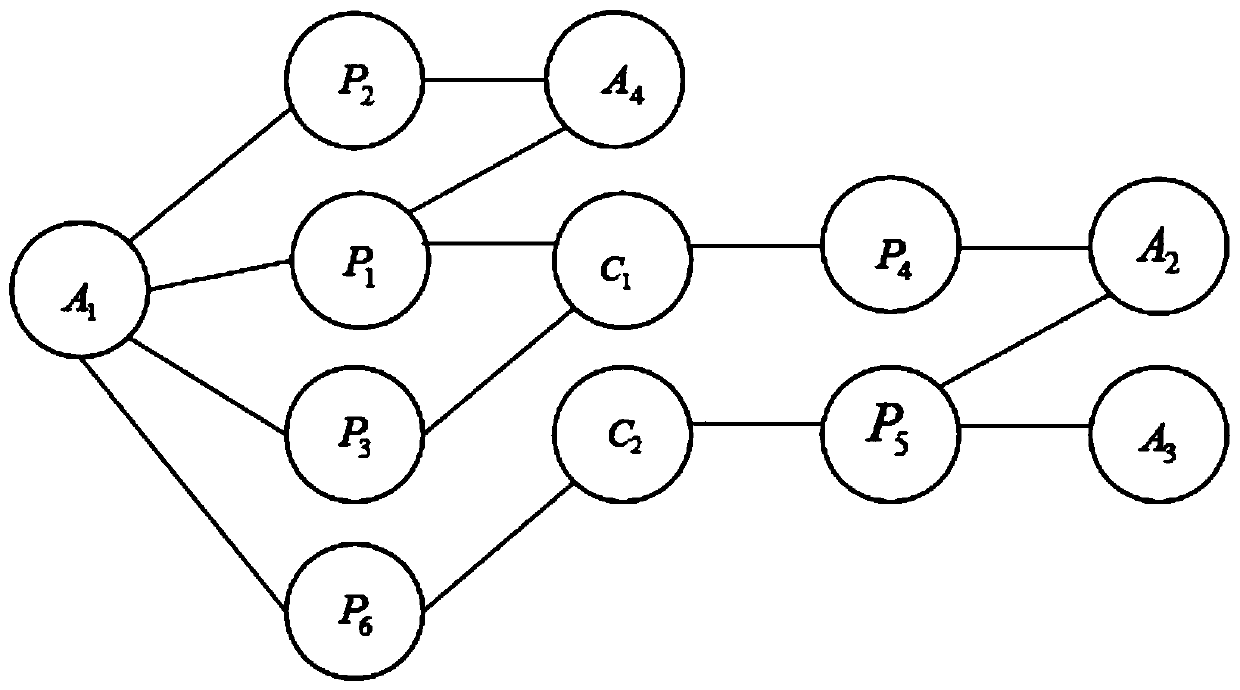Scientific research cooperation relationship prediction method based on heterogeneous information network
A heterogeneous information network and heterogeneous network technology, applied in the field of scientific research cooperation relationship prediction based on heterogeneous information network, can solve the problems of loss of semantic information, error of prediction results, and high computational complexity of topological features
- Summary
- Abstract
- Description
- Claims
- Application Information
AI Technical Summary
Problems solved by technology
Method used
Image
Examples
Embodiment Construction
[0066] In this embodiment, a method for predicting scientific research collaborations based on heterogeneous information networks is applied to any two authors who have not collaborated before, predicting the possibility of their future cooperation; specifically, as figure 1 As shown, proceed as follows:
[0067] Step 1. The heterogeneous network of scientific and technological literature is transformed into an author-author isomorphic network:
[0068] Step 1.1, build a heterogeneous network of scientific and technological literature G=(V, E); where, V represents the node set in the heterogeneous network of scientific and technological literature, and the types of node sets include author node sets, paper node sets, conference node sets and term nodes set; author node set is denoted as A={A 1 ,A 2 ,...,A i ,...,A a}, A i Indicates the i-th author node, 1≤i≤a; the paper node set is recorded as P={P 1 ,P 2 ,...P w ,...P p}, P w Indicates the wth paper node, 1≤w≤p; the...
PUM
 Login to View More
Login to View More Abstract
Description
Claims
Application Information
 Login to View More
Login to View More - Generate Ideas
- Intellectual Property
- Life Sciences
- Materials
- Tech Scout
- Unparalleled Data Quality
- Higher Quality Content
- 60% Fewer Hallucinations
Browse by: Latest US Patents, China's latest patents, Technical Efficacy Thesaurus, Application Domain, Technology Topic, Popular Technical Reports.
© 2025 PatSnap. All rights reserved.Legal|Privacy policy|Modern Slavery Act Transparency Statement|Sitemap|About US| Contact US: help@patsnap.com



